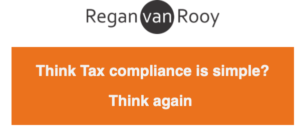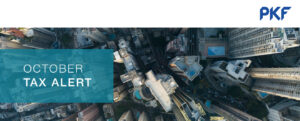Article was written and published by: ReganVanRooy
10 common mistakes in SA corporate tax returns – Part I
Today and next week we cover the greatest hits in terms of common, and costly, errors in South African tax returns. This list might seem a bit dry, but we recommend you or your pet tax nerd consider it very carefully when you submit your next tax return. There’s gold in these tax hills for sure, either in terms of deductions you might be missing, or mistakes you could be making which could lead to tax audits, underpaid tax, and of course interest and penalties. All references to sections are to sections of the South African Income Tax Act, no 58 of 1962. References to “SARS” are to the South African Revenue Service and to “IFRS” are to our beloved International Financial Reporting Standards.
1. Section 12C allowances
Section 12C provides that plant and machinery owned or acquired under an installment sale agreement that is brought into use for the first time and is used directly in a process of manufacture or similar process by a taxpayer for purposes of trade is eligible for accelerated depreciation allowances. However, some taxpayers who are entitled to section 12C allowances are under-claiming these allowances in earlier years of assessment. Therefore, they are not getting the cash flow advantage afforded by reducing their taxable income and therefore tax payable in earlier years of assessment but are rather (incorrectly) delaying the benefit of the allowance to later years:
- A full year’s allowance may be claimed in the year of assessment that the asset is first brought into use in the manner required by the section. Some taxpayers are apportioning the annual allowance in the year the asset is first brought into use according to the number of days it was used in that year.
- The rate of the allowance for new or unused plant and machinery is 40% of the cost in the year the asset is first brought into use and 20% of the cost in each of the next three years. Some taxpayers claim the allowance on new or unused machinery at the rate of 20% per annum of cost on a straight-line basis over five years.
2. Depreciation allowances on self-developed software
Although the software is legally classified as copyright, SARS has historically allowed taxpayers to claim depreciation allowances on software under section 11(e) which provides for depreciation allowances on assets (other than permanent structures) used by the taxpayer for purposes of trade. It has further historically been SARS’ practice to allow self-developed mainframe software used by a taxpayer for trade purposes to be fully depreciated in the tax year brought into use subject to an apportionment where the software was not used for the full year. The favourable treatment (from the taxpayer’s perspective!) of self-developed software came to an end with the issue of a new version of Interpretation Note No. 47, which was released on 24 March 2020 and applies to any qualifying asset brought into use on or after that date. Issue 4 of this note now lists the acceptable period for depreciation of mainframe software to be five years. Therefore, self-developed mainframe software brought into use after 24 March 2020 must be written off over five years for tax purposes.
3. Doubtful debt allowances
Section 11(j) contains an allowance for doubtful debts. Historically SARS allowed a taxpayer to claim an allowance equal to 25% of the amount of trade debts (excluding VAT) considered doubtful if supported by a list of the debts giving reasons why the debt was considered to be doubtful. Section 11(j) was amended for years of assessment commencing on or after 1 January 2019. Under the revised provisions, the calculation of section 11(j) doubtful debt allowance is dependent on whether the taxpayer has implemented IFRS 9 for financial reporting purposes or not.
We note that some taxpayers, apparently unaware of the changes, continue to claim a doubtful debts allowance on the basis of SARS’s previous practice. This is usually to the detriment of the taxpayer. Where the taxpayer has applied IFRS 9, the provision for doubtful debts in respect of trade debtors will often be determined as an “expected credit loss” using the “simplified approach”. In terms of section 11(j), 40% of such impairment loss provision may be claimed for tax purposes. Where the taxpayer has not applied IFRS 9 the section 11(j) allowance for any debts that are overdue by 120 days or longer is 40% of the amount of such debts (excluding VAT).
4. Stock obsolescence
Most businesses carry a stock obsolescence provision. Whilst taxpayers are permitted to write down closing stock to recognise a diminution in value owing to damage, deterioration, change of fashion, or decrease in the market value, in a recent court case it was determined that there should be an actual diminution in value for these reasons in order to take the write-off into account for tax purposes. To merely provide for stock items based on the fact that the items “remained on the shelves for a particular length of time” is not indicative of a diminution in the value thereof and each item should be considered based on its own nature and circumstances. This finding is particularly relevant for taxpayers who provide for obsolescence according to accounting policies based on ageing. Therefore, taxpayers should carefully review their stock obsolescence provisions to ensure they can be justified for tax purposes as the taxpayer needs to discharge the onus of proof if challenged by SARS.
5. Research and development
(R&D) expenditure Section 11D provides for a “supercharged” deduction of 150% of qualifying expenditure on R&D. The additional 50% deduction is a non-temporary difference that reduces the taxpayer’s effective tax rate and is therefore highly advantageous. However, section 11D contains a number of requirements all of which must be met before expenditure may be claimed as a deduction under that section. We emphasise two of these requirements:
Firstly, the R &D to which the expenditure in question relates must be approved by the Department of Science & Technology (DST) as meeting the relevant criteria contained in the definition of R&D in section 11D. Without that approval, no deduction may be made in terms of section 11D. In practice, however, it may happen that approval is granted only after the taxpayer’s year of assessment for which the deduction is sought and after the tax return for that year has been submitted. In such circumstances, taxpayers may request SARS to allow the deduction in the year of assessment to which the expenditure relates under section 11D(20);
Secondly, only expenditure incurred on or after the date of submission of the application for approval of the R & D to the DST is allowed to be claimed under section 11D.
We hope this list has caused some raised eyebrows rather than drooping eyelids. SARS has never been keener to raise tax revenues and they are on the lookout for the common errors discussed above, and of course, will not tell you where you’ve missed a trick.
At Regan van Rooy, we conduct deep-dive tax health checks on your corporate tax returns, either before submission to SARS annually, or as a regular check-in to mitigate risks, and we cover all these items in detail.







